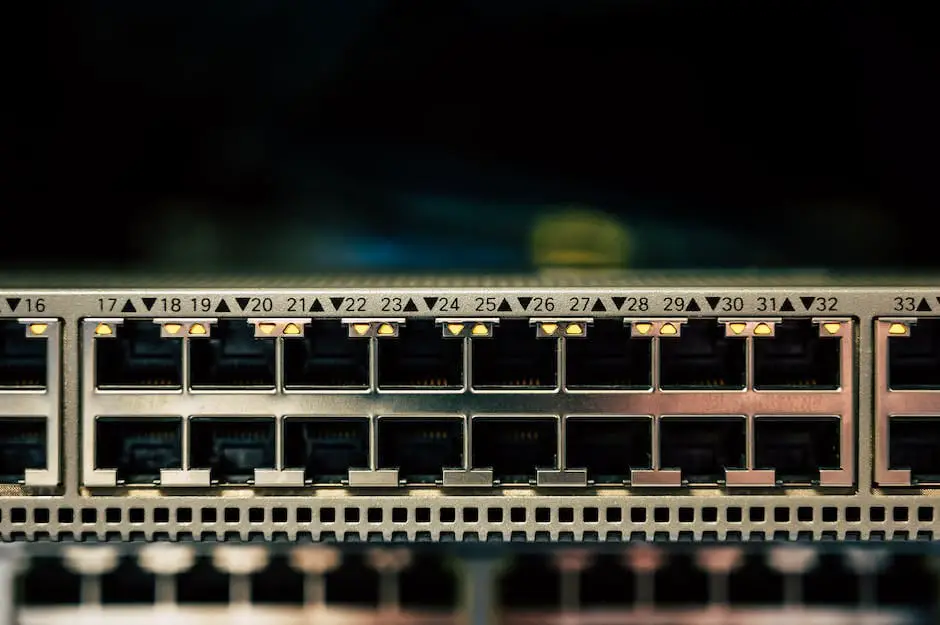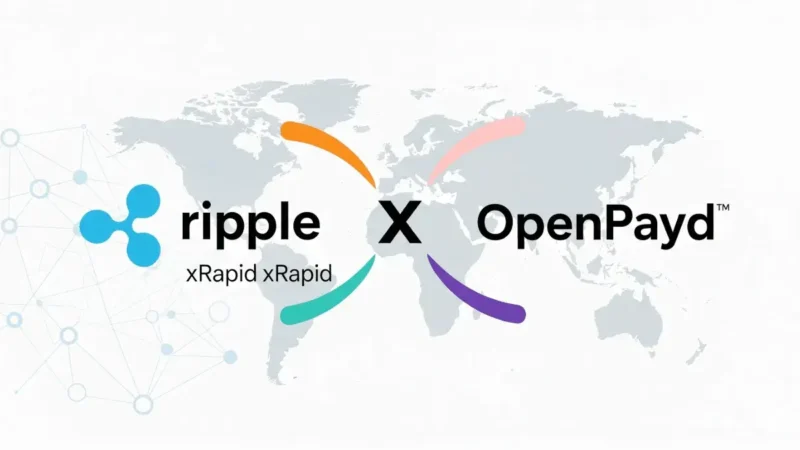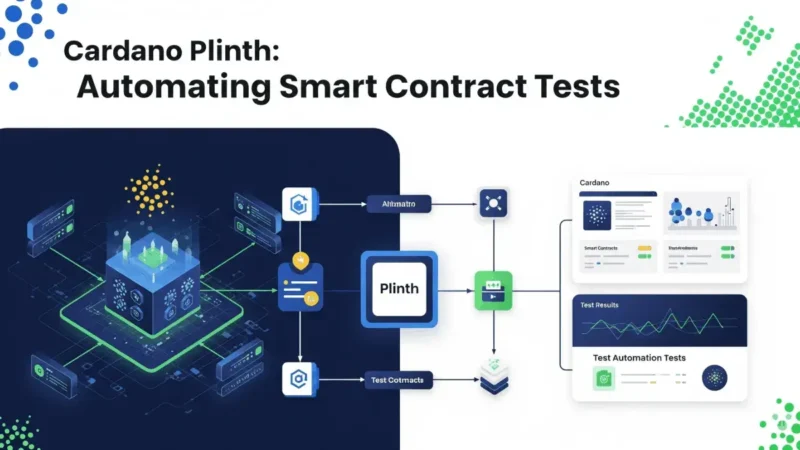Layer One vs Layer Two Blockchains: The Future of Scalability

The disruptive technology of Blockchains, renowned for its decentralization, transparency, and immutability, has been a game-changer across various sectors, heralding a new era of digital transactions. Being pivotal to the operation of cryptocurrencies, decentralized apps, and smart contracts, it’s crucial to demystify its intrinsic structure, notably the Layer One and Layer Two blockchains. Understanding these layers sheds light into blockchain’s potential scalability solutions, enabling us to appreciate not just the current capabilities of this enigmatic technology, but its future as well. This exploration delves into the components, operation, and real-life applications of Layer One and Layer Two blockchains and boldly envisages the future of blockchain scalability.
Understanding Blockchain Layers
In the ceaseless realm of technological innovation, blockchain has emerged as a groundbreaking technology. Thanks to its revolutionary characteristic of a decentralized and transparent database, it’s setting the groundwork for a new way of conducting transactions and managing information. But, what’s buzzing within this mammoth of technology is the ‘blockchain layer’, a critical aspect that directly influences the performance and scalability of a blockchain network.
Let’s dig into the world of blockchain and find out what these layers are and why they hold such gravitas.
Blockchain layers, in simplest terms, are distinct levels within a blockchain network. These layers segregate various blockchain functions thereby ensuring a smooth operation that is easily manageable and scalable. Typically, blockchain may be divided into two predominant layers: the Protocol layer and the Application layer.
At the core of any blockchain system lies the ‘Protocol Layer’, also known as the network or the infrastructure layer. This layer comprises the base protocol, policies, rules, and algorithms that underline the operation of the blockchain network. It takes care of the validation, consensus methods (proof-of-work or proof-of-stake), and all activities related to the mining of new blocks and adding them to the chain.
The structures, mechanisms, and design of the protocol layer critically influence the security, speed, and decentralization level of the blockchain. For example, the Bitcoin and Ethereum blockchain, built on different protocol layers, exhibit varying capabilities and transaction speeds – a direct consequence of the design of their protocol layers.
Moving forward, the ‘Application Layer’, or the overlaying upper layer, is typically where all the action is. This layer hosts the smart contracts, decentralized applications (dApps), and interfaces that users interact with. The user experience, functionality, and accessibility of blockchain-based apps and services mainly depend on the application layer.
But why does this matter?
The profound significance of the layered architecture in blockchain technology can’t be overstressed. It has direct implications on the scalability of the blockchain. By assigning specific functionalities to each layer, blockchain networks can effectively manage and streamline the demand on resources. When there is a surge in transactions that the network needs to handle, each layer can independently scale to manage its part of the process, preventing the network from becoming bottlenecks.
Additionally, the distinction between layers also provides scope for unique technological development in each layer without necessarily affecting others. It allows blockchain technologies to evolve in a more compartmentalized and systemic way. This layered approach can thus drive blockchain towards more efficient, secure, and easy-to-develop infrastructure.
All in all, the layered setup forms the backbone in fundamentally shaping the capability and functionality of a blockchain. It’s at the heart of optimizing blockchain’s scalability, performance, and the future evolution of this exciting technology. So, next time you explore the blockchain ecosystem, remember to peek into those critical layers beneath. They indeed have a story of their own – a story that spells the potential and power of blockchain technology.

Analysis of Layer One Blockchains
Delving Deeper Into Layer One Blockchains: Unique Features and Limitations
Shaping the core foundation of any blockchain structure, the protocol layer or Layer One sets the rules of engagement for an entire blockchain ecosystem. It lays the groundwork that handles the core responsibilities of transaction validation and consensus-building. But while it’s the cornerstone of blockchain networks, this “ground layer” has both strengths and weaknesses that can heavily influence a system’s overall performance, scalability, and utility.
Layer One blockchains can offer unmatched decentralization in their structures. By democratizing the validation process, they contribute directly to increased trust, security, and transparency. From Bitcoin to Ethereum, all major blockchains maintain this initial layer to validate transactions and mine new blocks. This decentralization is structured around both Proof of Work (PoW) and Proof of Stake (PoS) consensus models, driving an environment of inclusivity and fairness.
Along with improved trust and transparency, Layer One blockchains can also provide an unperturbed security environment. The groundwork layer focuses on cryptographic protocols, offering robust protection against fraudulent activities. It employs public-key cryptography, securing digital signatures which are almost impossible to forge, and fostering an ecosystem where transactions are verified by a wide network, virtually nullifying the chances of meddled data.
However, Layer One blockchains aren’t without their limitations. A key constraint is the inherent scalability issue. The necessity of all core nodes to validate every transaction can significantly hamper the network’s scalability. The PoW consensus method, for example, prioritizes security over scalability, severely restricting the number of transactions that can be processed per second. This, in turn, results in slower transaction speeds and higher costs, inhibiting mass adoption and affecting user experience.
Moreover, the extensive energy consumption associated with Layer One blockchains, specifically those using PoW consensus models, has raised significant environmental concerns. The high computational effort required for mining in blockchains like Bitcoin, necessitating large amounts of electricity, has led to criticism regarding the sustainability of these models.
Lastly, while Layer One establishes the fundamental rules for blockchain systems, it lacks flexibility. Alterations to these primary rules are highly challenging, requiring the consensus of the majority, if not all, participating nodes. This characteristic, known as hard fork, often leads to contention within the blockchain community and hampers agility in response to evolving user needs and technological advancements.
All in all, the importance of Layer One in shaping a blockchain network cannot be overstated. It’s the first building block crafting the network’s core functionalities, and its design significantly influences the values of trust, security, and transparency in the network. However, it’s clear that the current limitations of Layer One blockchain technology necessitate innovative solutions to enhance scalability, improve energy efficiency, and fluidly adapt to the ever-evolving landscape of tech needs and trends. As the technology evolves, addressing these concerns will be instrumental to its growth and adoption.

Analysis of Layer Two Blockchains
Delving deeper into blockchain networks, Layer One primarily revolves around trust, security, and transparency. Ensuring data integrity by employing robust consensus algorithms like Proof of Work (PoW) or Proof of Stake (PoS), and using cryptographic methods to maintain data security, Layer One makes every transaction tamperproof. Its decentralized nature further boosts transparency as each participant in the network has access to the complete ledger, thus providing an enhanced level of trust.
However, this impeccable security and trust come with their own set of limitations. Scalability is the most significant bottleneck for Layer One blockchains. In simple terms, it defines the ability of the network to handle growing amounts of work in a capable manner. Every node in such a network needs to validate each transaction, causing latency and limiting transaction speed. Network congestion during high demand could lead to exorbitant transaction fees, as seen during peak periods in famous Layer One blockchains like Bitcoin and Ethereum.
Moreover, Layer One blockchain’s energy consumption has sparked serious environmental debates. Networks operating on PoW consensus use mining, an energy-intensive process, raising concerns about their carbon footprint.
Another issue relates to the rigidity of Layer One blockchains. Making changes or introducing new functions to the existing protocol layer isn’t simple and requires consensus from the majority of network participants, often making it unfeasible.
Despite these limitations, the importance of Layer One is unmissable. It lays the blockchain network’s backbone, underpinning its operation and establishing the fundamental rules. However, to address these issues, to make blockchain more scalable, energy-efficient, and customizable, a novel concept has emerged, known as Layer Two.
Layer Two is a secondary framework, or an overlay, built on top of Layer One, inheriting the trust and security of the underlying layer while providing superior scalability. Instead of every node validating the transactions, like in Layer One, Layer Two leverages the idea of off-chain transactions. The transactions are processed off the main chain, and only the final state is recorded on the Layer One blockchain. This means less data on the main chain, leading to faster transaction speed, lower fees, and improved scalability.
Layer Two also introduces more flexibility into blockchain networks. Rules on the Layer Two level can change independently of Layer One, allowing more innovative solutions without tampering with the base layer. An added benefit includes lower environmental impact as Layer Two decreases the load on the primary layer, reducing the energy consumed by transactions.
In summary, Layer Two could be the transformative element the blockchain technology is looking for. By inheriting Layer One’s trust and security and overcoming its limitations, it provides a more scalable, efficient, and adaptive solution, enabling the technology to meet the ever-evolving demands of today’s tech-driven world.

Real-world Applications of Layer One and Layer Two Blockchains
Diving into the domain of practical applications for Layer One and Layer Two blockchains invokes an expedition through a sea of innovative possibilities. Having laid the groundwork for understanding the layered foundations of blockchain technology and its separate spheres of operation in the previous sections, the natural progression leads toward an exploration of tangible use-cases in real-world scenarios.
Layer One blockchains, the underlying protocol (think Bitcoin or Ethereum), are remarkable for creating trustless, decentralized networks, fungible or non-fungible tokens (NFTs), and their inherent resilience against hacking and fraud. Driven by robust transparency and security mechanisms, they offer a groundbreaking platform for a myriad of applications ranging from remittances, voting systems, cross-border transfer of assets, to digital identity verification.
Cryptocurrencies like Bitcoin and Ethereum are perhaps the most recognized utilization of Layer One blockchains, attaining international recognition and redefining the concept of money. Besides financial applications, Layer One’s immutable ledger capacities have sparked interest in fields like supply chain management, land registration, and healthcare records management by providing perennial, verifiable data trails.
Yet, these blockchains’ design inflexibility, energy consumption, and scalability issues brought about the advent of Layer Two solutions, which function atop Layer One, offering a myriad of solutions to their inherent limitations.
Archetypal Layer Two solutions encompass technologies like Lightning Network for Bitcoin and Plasma, or Sharding for Ethereum. These solutions open up possibilities for off-chain transactions, scalable DApps, and real micro-payments, demonstrating increased transaction speeds, and lowered fees, all while sticking to the essential principles of blockchain technology: decentralization and security.
The key to Layer Two’s allure lies in its potential to create use-cases that, up until now, have been impractical on Layer One. It is replete with potential for IoT microtransactions, real-time asset exchanges, gaming applications, and high-frequency trades among others. Its off-chain features enable a surge in transactions per second, making blockchain technology a practical option for conventional online and offline systems requiring high throughput.
A compelling example of Layer Two utility is the thriving DeFi (Decentralized Finance) space, which exploits smart contracts to reproduce traditional financial instruments in a decentralized architecture. Other intriguing instances include blockchain-based gaming platforms such as Enjin, which hosts gaming assets in a Layer Two environment to offer players a faster, more efficient gaming experience.
Another revolutionary application comes with the maturation of Decentralized Exchanges (DEXs), like Uniswap, a gamechanger expecting Layer Two integration to alleviate network congestion, reduce fees and provide a more seamless transaction experience for users.
Now, the concept of blockchain doesn’t dwell on the periphery of tech enthusiasm rather, it stalwartly stands as an avenue for practical solutions, especially with Layer Two solutions unlocking scalable, flexible, and more environmentally friendly applications. However, it’s essential to remember that while Layer Two aims to remedy Layer One’s limitations, it will augment rather than replace it. Together, they will stimulate the ongoing blockchain revolution, enabling the technology to reach its full potential.

The Future of Blockchain Scalability
At this crossroads in the evolution of blockchain technology, Layer Two solutions have emerged as a viable compass pointing towards a seamless and efficient future. A substantial course correction from the constraints of Layer One blockchains, they act as an overlay network tasked with scaling the root blockchain and improving energy efficiency. By decongesting the root chain and processing transactions off-chain, these so-called ‘coping mechanisms’ streamline operations and enhance throughput, all while preserving the Layer One sanctity.
Lightning Network, Plasma, and Sharding: these are not just trendy buzzwords, they are the principal Layer Two solution this generation has fostered. Take, for instance, the Lightning Network for Bitcoin. Designed to facilitate instant off-chain micro-payments, this second layer solution dramatically enhances Bitcoin’s potential by enabling millions of transactions per second, a feat exceeding even that of traditional financial intermediaries.
On the other hand, Ethereum’s Plasma reinforces this trend, allowing the creation of child-chains to take on a bulk of the transaction load, relieving the main chain, and improving the transactional capacity exponentially. It’s akin to having branch offices handle minor transactions while the head office focuses on broad, significant decisions—a delegation that holds the promise of unrivaled transaction speeds.
Sharding, another Layer Two solution, segments the blockchain network into smaller, more manageable parts termed ‘shards’. Each shard holds its registry of unique accounts and smart contracts, thereby immensely boosting the network’s capacity by allowing transactions within each shard to be processed in parallel.
Layer Two is also a proponent of sustainability. By shifting the bulk of transactions off-chain, it drastically curbs energy consumption. Looking beyond just Blockchains, Layer Two solutions can optimize Distributed Ledger Technologies (DLTs) thereby casting a wider net to capture potential utility and efficiency gains in this technical revolution.
Layer Two’s manifest destiny lies in its ability to make Blockchain technology accessible and feasible for the industry at large, beyond just cryptocurrencies. Think of Internet of Things (IoT) microtransactions, real-time asset exchanges, decentralized gaming platforms, or high-frequency trade settlements. In this domain, Layer Two’s ability to process microtransactions rapidly opens up a new frontier for DLTs, setting the stage for a swarm of devices to communicate and trade autonomously.
The rise of the DeFi (Decentralized Finance) space and Decentralized Exchanges (DEXs) owes much to Layer Two. Supporting cost-efficient, swift transactions, Layer Two creates an ecosystem where DeFi applications can actually deliver on their promises of financial democracy and decentralization.
In stark contrast to Layer One’s immovable rigidity, Layer Two’s flexibility allows rule changes at the software application level, bolstering a more adaptive face to blockchain technology. This difference does not amount to a rivalry, rather a symbiosis: Layer Two’s prowess isn’t fully ignited without the immutability and comprehensive security provided by Layer One blockchains.
In summary, Layer One and Layer Two are the perfect counterpoints, each supporting and reinforcing the capabilities of the other in the grand symphony of blockchain technology. They underpin the ongoing technological revolution, encapsulating a harmonized future with seamless transactions, enhanced scalability, and improved energy efficiency. Layer Two solutions represent a guiding beacon, illuminating the future of a scalable, efficient blockchain realm.

Blockchain technology, with its incessant evolution, represents the dawn of a transformed digital future; where issues of scalability are progressively addressed, leading to its more significant adoption and applications across industries. From harnessing Layer One’s solid foundation to capitalizing on Layer Two’s enhanced scalability solutions, the journey of dissecting these layers unravels the dynamics of the blockchain world. While we continue to witness the innovative mixing and matching of these layers, the breakthrough may very well lie in the perfect equilibrium between Layer One’s security and Layer Two’s scalability. As we move forward, foreseeing the realm of possibilities in the blockchain’s scalability saga, the crux lies in not just understanding but embracing and navigating these layers for the technology’s more profound, wider benefits.



